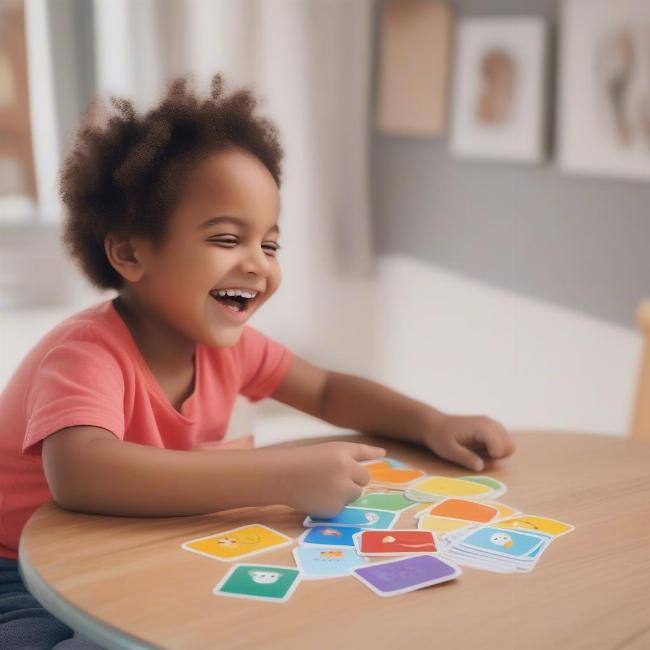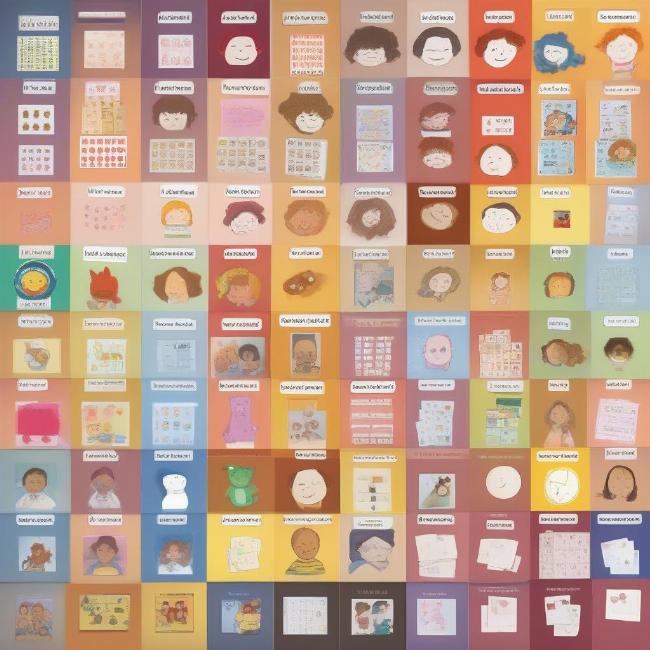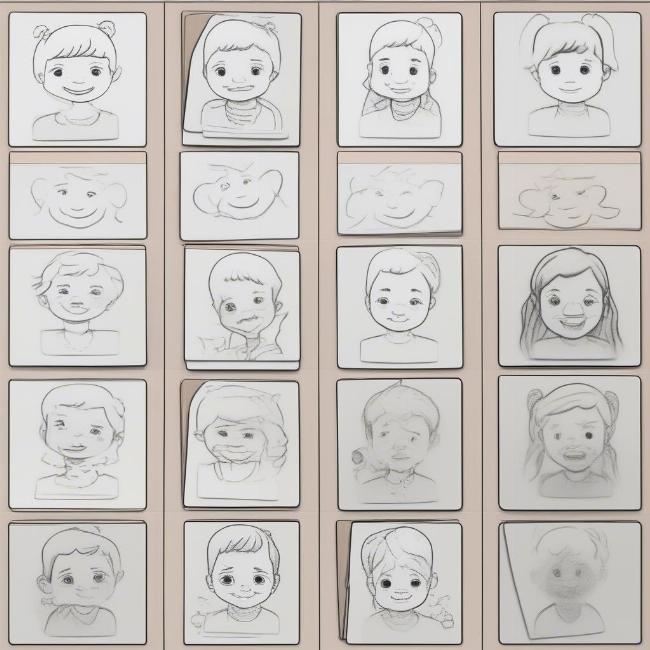Feelings Matching Game Printable resources are fantastic tools for helping children understand and express their emotions. These printable games offer a fun and engaging way to learn about different feelings, build emotional vocabulary, and develop crucial social-emotional skills.
Exploring the World of Printable Feelings Matching Games
Printable feelings matching games come in various formats, catering to different age groups and learning styles. From simple matching pairs to more complex memory games, these resources provide a versatile platform for emotional learning. They are a cost-effective and accessible way to introduce emotional intelligence concepts at home or in the classroom. Using feelings matching game printable resources can create a positive learning environment where children feel comfortable exploring and discussing their emotions.
Benefits of Using Feelings Matching Game Printables
- Enhanced Emotional Vocabulary: Children learn to identify and name a wider range of emotions beyond basic happy, sad, and angry.
- Improved Emotional Recognition: Matching games help children connect facial expressions and body language to specific emotions.
- Develop Empathy and Understanding: By exploring different feelings, children develop a better understanding of their own emotions and those of others.
- Fun and Engaging Learning: The game format makes learning about emotions enjoyable and less intimidating.
- Cost-Effective and Accessible: Printable games are readily available online and are a budget-friendly option for parents and educators.
How to Use Feelings Matching Game Printables Effectively
- Start with Simple Games: For younger children, begin with basic matching pairs featuring common emotions.
- Encourage Discussion: Use the game as a springboard to discuss different feelings and how they manifest in real-life situations.
- Incorporate Role-Playing: Ask children to act out the emotions depicted on the cards to reinforce learning.
- Create a Safe Space: Ensure children feel comfortable sharing their feelings and experiences during the game.
- Adapt the Game: Modify the game to suit different learning styles and age groups. For example, create a memory game for older children.
 Matching Feelings Game for Kids
Matching Feelings Game for Kids
Different Types of Feelings Matching Games Printable
There are numerous variations of feelings matching game printable available online. Some popular options include:
- Matching Pairs: Children match identical cards depicting the same emotion.
- Memory Games: Cards are placed face down, and children try to find matching pairs by flipping two cards at a time.
- Bingo: Children mark off emotions on their bingo cards as they are called out.
- Board Games: Children move around a board based on the emotions they land on.
Choosing the Right Feelings Matching Game Printable
Consider the child’s age, learning style, and specific needs when selecting a game. Younger children may benefit from simpler matching games, while older children can engage with more complex options like memory games or bingo.
“Choosing the right game can make a significant difference in a child’s learning experience,” says Dr. Minh Anh Nguyen, a child psychologist specializing in emotional development. “Tailoring the activity to their specific needs ensures optimal engagement and understanding.”
 Different Types of Feelings Matching Games
Different Types of Feelings Matching Games
Creating Your Own Feelings Matching Game Printable
Designing a customized feelings matching game printable is a simple process. You can use online templates or create your own using drawing software or even hand-drawn images.
Steps to Create a Personalized Feelings Matching Game
- Choose Your Emotions: Select the emotions you want to include in the game.
- Create Images: Draw or find images that represent each emotion.
- Print and Cut: Print the images onto card stock and cut them into individual cards.
- Laminate (Optional): Laminating the cards increases their durability.
“Creating a personalized game allows you to address specific emotional challenges a child might be facing,” adds Dr. Nguyen. “It empowers them to take ownership of their learning and express themselves creatively.”
 Create Your Own Feelings Matching Game
Create Your Own Feelings Matching Game
Beyond the Game: Extending Learning about Feelings
Feelings matching game printable resources are just a starting point. Extend the learning by incorporating these activities:
- Storytelling: Encourage children to create stories about characters experiencing different emotions.
- Art Projects: Provide art supplies for children to express their feelings through drawing, painting, or sculpting.
- Journaling: Encourage older children to write about their emotions in a journal.
Conclusion
Feelings matching game printable resources provide a valuable and engaging way to teach children about emotions. By utilizing these tools and extending the learning through various activities, parents and educators can empower children to develop essential social-emotional skills and navigate the world of feelings with confidence. Start exploring the world of feelings matching game printable today and unlock a world of emotional learning for the children in your life.
FAQ
-
Where can I find free feelings matching game printables? Many websites offer free printable resources, including educational websites, parenting blogs, and teacher resource platforms.
-
What age group are these games suitable for? Feelings matching games can be adapted for various age groups, from preschoolers to older children.
-
Can I use these games in a therapy setting? Yes, therapists often utilize these games as a tool for emotional exploration and expression.
-
How can I make these games more challenging for older children? Introduce more complex emotions, create a memory game, or incorporate a scoring system.
-
What other activities can I do to teach children about feelings? Storytelling, art projects, and journaling are excellent ways to extend learning about emotions.
-
How can I help a child who struggles to identify their feelings? Start with basic emotions and gradually introduce more nuanced feelings. Use real-life examples and encourage open communication.
-
Are there printable games available in different languages? Yes, some websites offer printable resources in multiple languages.
